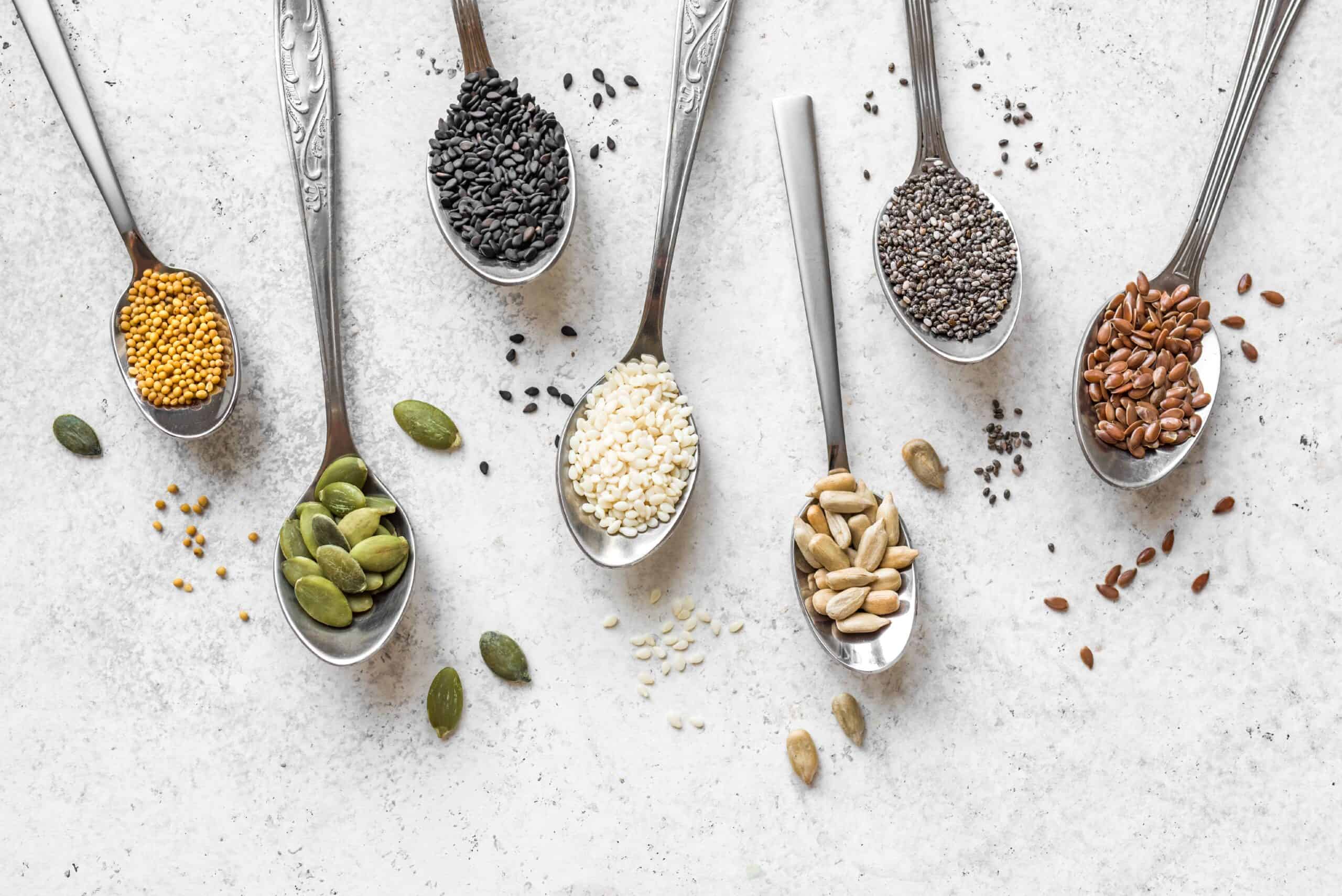Four reasons why your body weight is overrated
Weight has been considered to be a key indicator of health for as long as we have known. It continues to be a fundamental factor that is looked at in research surrounding health and lifestyle. But how accurate is it actually at determining our health at an individual and population level?
You may have read our previous blog post where we picked apart the reliability of BMI. In this article, we will dig deeper into the literature surrounding weight science and what the implications really are when it comes to our health.
What is weight science?
Weight science refers to the research on body weight, which includes and is not limited to:
- The regulation of body weight (weight loss or gain)
- Internal and external factors influencing weight change or maintenance
- Intentional or non-intentional weight loss or gain
- The relationship between weight and health
A lot of weight science research takes into account health outcomes concerning weight or BMI. This might be because the assumption that BMI is a useful indicator of health is still held by many scientists and health researchers. The general consensus is that:
- Achieving a BMI in the normal range of 18.5-25 will improve health.
- Dieting and exercise should be encouraged in those lying outside this range to ensure they work towards achieving a ‘healthier’ BMI and are no longer considered ‘obese’ or ‘overweight.’
Read on to explore four reasons why we believe weight can sometimes be overestimated as an indicator of health.
ONE: Weight is more often than not, an inaccurate predictor of health.
When we dig deeper into the research, we realise that and social determinants of health play a much greater view than we think. Social determinants of health (SDoH) are the conditions in which we are born, live, work and age.
SDoH can be thought of as the ’causes of the causes’ as they often shape how we may receive or learn about health and the conditions that may promote good health or disease risk and are the biggest single cause of health inequality. (1)
We also know that being in a larger body may actually be protective, particularly in old age and may have more favourable outcomes.
A 2011 review showed that those with particular health conditions such as cardiovascular disease survive longer and have a lower mortality rate than those considered a ‘normal’ weight. (2)
Research also found that any effects related to obesity were counteracted when fitness was incorporated, suggesting that low fitness and activity levels may be more damaging to health than being at a higher BMI or weight. (2)
TWO: Weight loss is not associated with improved health.
A 2013 review by Tomiyama et al. (3) looked at the changes in cholesterol, triglycerides, systolic/diastolic blood pressure, and fasting blood glucose and weight loss.
The findings showed minimal improvements in these biochemical markers after weight loss interventions. However, there was no correlation between the actual amount of weight change and the improvement of these factors.
The review also showed that some confounding variables in the interventions, such as diet and exercise change, might have had an impact. These and engaging actively with your healthcare system are perhaps more beneficial than weight loss. (3)
Other studies have shown that weight cycling (repeated periods of losing and regaining weight) can actually be detrimental to health, increasing mortality risk. (4)
Park et al. showed that weight cycling increased risks of developing type 2 diabetes and can be considered an independent risk factor for the condition. (5) In addition, Welti et al. found that some cancer incidences increased (including a 38% increased risk of endometrial cancer) with weight cycling. (6)
Byun et al. similarly discovered that weight cycling led to poorer heart health, particularly in premenopausal women and women with no history of pregnancy – so we can see a trend here with the negative consequences weight cycling may have on our bodies. (7)
THREE: Dieting can lead to poorer mental and physical health.
For those of us who have tried dieting, we know that it quickly loses the fun and excitement that it may have initially started with. Research shows that diets are a cause of stress, creating hypervigilance around food and weight.
This increased thinking and anxiety around food can make us more restrictive when it comes to our diet and may potentially develop into disordered eating or even an eating disorder.
In a study by Bombak et al., it was shown that dieting is also associated with a loss of bone and lean mass and poorer immunity and skeletal integrity. (8)
This is significant, as we believe our bones reach their peak mass around the ages of 25-30, and any bone mass loss after this age can be irreversible. This increases our chances of developing osteopenia or osteoporosis and being more prone to fractures and serious injury. (8)
FOUR: Weight loss is not often achieved and maintained in the long term.
Countless studies have shown that weight loss is uncommon initially, but lasting weight loss is even more rare to accomplish. In fact, some research even shows that more weight is sometimes gained than what was lost in the first place. (9)
A further review by Ayyad and Anderson found that the median success rate of a diet program is around 15%. We believe that this is due to the physiological and psychological effects of dieting, as mentioned in the previous point. (10)
Improvements to health can be obtained without a focus on weight, and non-diet approaches have sparked interest in recent years to improve body image, self-esteem, depressive and disordered eating behaviours. (11)
Non-diet interventions also have displayed improvements in diet quality and diversity of foods, including a higher fruit and vegetable intake and less restriction and stress around food. (12, 13) They have also shown to improve physical activity participation, blood lipid and glucose levels, and total cholesterol and blood pressure. (12, 14)
By reading this, remind yourself that you are already embarking upon an incredible healing journey and have come so far to begin to break away from what may be a period of disordered eating.
We hope this article helped to outline some of the research surrounding why weight loss may not always be as great as diet culture often makes it seem. Until next time, keep your head up and rise above restriction!
Priya Chotai, BSc ANutr
EHL Team x
References:
1. Irwin A, Valentine N, Brown C, Loewenson R, Solar O, Brown H, Koller T, Vega J. The commission on social determinants of health: tackling the social roots of health inequities. PLoS Med. 2006 May;3(6):e106. doi: 10.1371/journal.pmed.0030106. PMID: 16681414; PMCID: PMC1459479.
2. McAuley PA, Blair SN. Obesity paradoxes. J Sports Sci. 2011 May;29(8):773-82. doi: 10.1080/02640414.2011.553965. PMID: 21416445.
3. Tomiyama AJ, Ahlstrom B, Mann T. Long-term effects of dieting: Is weight loss related to health? Social and Personality Psychology Compass 2013; 7(12): 861-877.
4. Tae Jung Oh, Jae Hoon Moon, Sung Hee Choi, Soo Lim, Kyong Soo Park, Nam H Cho, Hak Chul Jang, Body-Weight Fluctuation and Incident Diabetes Mellitus, Cardiovascular Disease, and Mortality: A 16-Year Prospective Cohort Study, The Journal of Clinical Endocrinology & Metabolism, Volume 104, Issue 3, March 2019, Pages 639–646, https://doi.org/10.1210/jc.2018-01239
5. Park KY, Hwang HS, Cho KH, Han K, Nam GE, Kim YH, Kwon Y, Park YG. Body Weight Fluctuation as a Risk Factor for Type 2 Diabetes: Results from a Nationwide Cohort Study. J Clin Med. 2019 Jun 30;8(7):950. doi: 10.3390/jcm8070950. PMID: 31261984; PMCID: PMC6678837.
6. Welti LM, Beavers DP, Caan BJ, Sangi-Haghpeykar H, Vitolins MZ, Beavers KM. Weight Fluctuation and Cancer Risk in Postmenopausal Women: The Women’s Health Initiative. Cancer Epidemiol Biomarkers Prev. 2017 May;26(5):779-786. doi: 10.1158/1055-9965.EPI-16-0611. Epub 2017 Jan 9. PMID: 28069684; PMCID: PMC5413381.
7. Byun SS, Bello NA, Liao M, Makarem N, Aggarwal B. Associations of weight cycling with cardiovascular health using American Heart Association’s Life’s Simple 7 in a diverse sample of women. Prev Med Rep. 2019 Nov 2;16:100991. doi: 10.1016/j.pmedr.2019.100991. Erratum in: Prev Med Rep. 2020 Oct 29;20:101236. PMID: 31750075; PMCID: PMC6849443.
8. Bombak A, Monaghan LF, Rich E. Dietary approaches to weight-loss, Health At Every Size® and beyond: rethinking the war on obesity. Social Theory and Health. 2019 Mar 1;17(1):89-108. https://doi.org/10.1057/s41285-018-0070-9
9. Bravata DM, Sanders L, Huang J, et al. Efficacy and safety of low-carbohydrate diets: a systematic review. 2003. In: Database of Abstracts of Reviews of Effects (DARE): Quality-assessed Reviews [Internet]. York (UK): Centre for Reviews and Dissemination (UK); 1995-. Available from: https://www.ncbi.nlm.nih.gov/books/NBK69697/
10. Ayyad C, Andersen T. Long-term efficacy of dietary treatment of obesity: a systematic review of studies published between 1931 and 1999. Obes Rev. 2000 Oct;1(2):113-9. doi: 10.1046/j.1467-789x.2000.00019.x. PMID: 12119984.
11. Clifford D, Ozier A, Bundros J, Moore J, Kreiser A, Morris MN. Impact of non-diet approaches on attitudes, behaviors, and health outcomes: a systematic review. J Nutr Educ Behav. 2015 Mar-Apr;47(2):143-55.e1. doi: 10.1016/j.jneb.2014.12.002. PMID: 25754299.
12. Carroll S, Borkoles E, Polman R. Short-term effects of a non-dieting lifestyle intervention program on weight management, fitness, metabolic risk, and psychological well-being in obese premenopausal females with the metabolic syndrome. Appl Physiol Nutr Metab. 2007 Feb;32(1):125-42. doi: 10.1139/h06-093. PMID: 17332789.
13. Greene GW, White AA, Hoerr SL, Lohse B, Schembre SM, Riebe D, Patterson J, Kattelmann KK, Shoff S, Horacek T, Blissmer B, Phillips BW. Impact of an online healthful eating and physical activity program for college students. Am J Health Promot. 2012 Nov-Dec;27(2):e47-58. doi: 10.4278/ajhp.110606-QUAN-239. PMID: 23113786.
14. Ciliska D. Evaluation of two non-dieting interventions for obese women. West J Nurs Res. 1998 Feb;20(1):119-35. doi: 10.1177/019394599802000108. PMID: 9473971.










